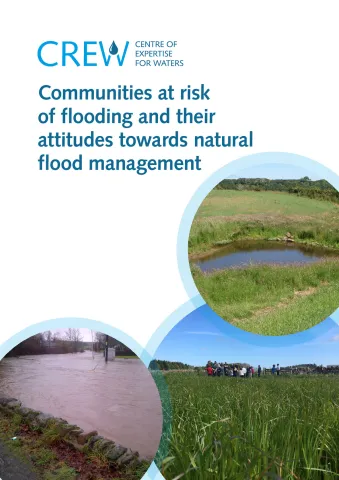This study looks at what communities at risk of flooding know and feel about Natural Flood Management (NFM). NFM can involve a variety of tools to slow down or store floodwater such as restoring natural river channels, removing flood embankments, planting trees along riverbanks, and blocking upland drains. NFM is a key part of sustainable flood risk management, so understanding attitudes to NFM can help develop approaches for engaging communities in flood risk management. Following background research, the project team contacted four communities around Scotland to arrange discussion groups and visited each of them in early 2019. The project explored their views on NFM, as well as their experience of flooding, and their communications with flood risk authorities.
The study found that there was general interest in NFM. Therefore, community attitudes to NFM are not necessarily a barrier to developing new NFM schemes. Indeed, the discussion groups were generally keen for all aspects of sustainable flood risk management, including NFM, to be considered during planning so that their risk of flooding might be reduced. People were familiar with specific examples of NFM (e.g. woody dams, restoring floodplains, slowing the flow) and identified how NFM schemes may deliver other benefits, such as increased biodiversity or amenity value. However, community members often lack awareness of what a full NFM scheme might involve, including the complexity and uncertainties associated with planning and implementing NFM at a catchment scale. Consequently, people would welcome more information, which could include visits to an existing NFM site or developing a local pilot study, and constructive involvement in flood management planning and implementation.
Scepticism about NFM tended to derive from lack of trust in the processes for planning and delivery of flood risk management schemes in general, rather than reservations specific to NFM. There was a common perception that responsible agencies could work together to more effectively communicate with communities around flood risk management planning. Strengthening community engagement could help in developing and sustaining working relationships with communities at risk of flooding, and so in implementing all aspects of sustainable flood risk management.
